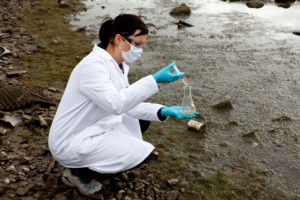 The United Kingdom’s Royal Society and Royal Academy of Engineering has called for the environmental release of nanomaterials to be “avoided as far as possible”, and for their intentional release to “be prohibited until appropriate research has been undertaken and it can be demonstrated that the potential benefits outweigh the potential risks.” Unfortunately, we are seeing just the opposite occur.
The United Kingdom’s Royal Society and Royal Academy of Engineering has called for the environmental release of nanomaterials to be “avoided as far as possible”, and for their intentional release to “be prohibited until appropriate research has been undertaken and it can be demonstrated that the potential benefits outweigh the potential risks.” Unfortunately, we are seeing just the opposite occur.
Nanomaterials are entering the environment through fertilisers, pesticides, waste and wastewater streams and the breakdown of nanomaterials through use or exposure to environmental conditions.
Despite the tiny size of nanomaterials, the quantities of waste aren’t small. A US study calculated that in 2010 260,000–309,000 tonnes of global nanomaterial production ended up in landfills (63–91%), soils (8–28 %), water bodies (0.4–7 %), and the atmosphere (0.1–1.5 %). This figure is increasing rapidly. Because of a lack of research into the environmental impacts of nanomaterials, we are lacking basic and critical information such as exposure pathways for nanomaterials, impacts of different types of nanomaterials and the cumulative, combined and long term impacts of nanomaterials in different environments.
Although environmental impacts have been poorly studied, there is increasing evidence that some nanomaterials could cause harm. Nano-silver, for example, has been found to have adverse impacts on plants, micro-organisms and aquatic organisms. Currently, there is no regulation in Australia addressing the release of nanomaterials into the environment.

